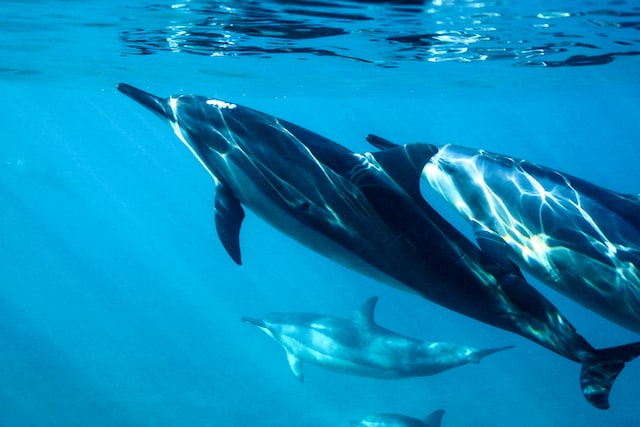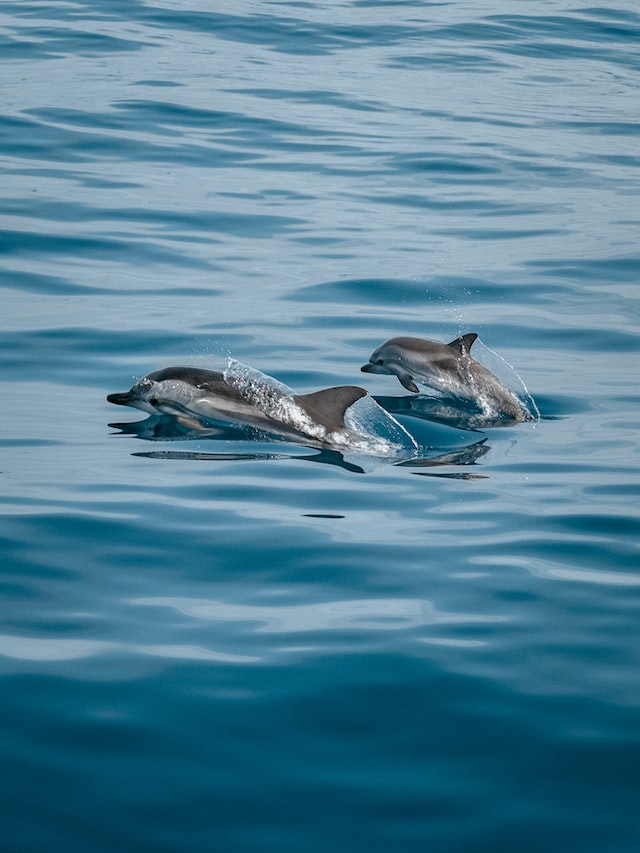

A dolphin is a type of aquatic mammal that belongs to the suborder Cetacea. Delphinidae (oceanic dolphins), Platanistidae (Indian river dolphins), Iniidae (New World river dolphins), Pontoporiidae (brackish dolphins), and the extinct Lipotidae are the dolphin families (baiji or Chinese river dolphin). There are 40 existing dolphin species.
The Maui's dolphin is 1.7 meters (5 feet 7 inches) long and weighs 50 kilograms (110 pounds), while the orca is 9.5 meters (31 feet 2 inches) long and weighs 10 tonnes (11 short tons). Several dolphin species exhibit sexual dimorphism, with males being larger than females. They have streamlined bodies and two modified limbs that serve as flippers. Though not as adaptable as seals, some dolphins can travel at speeds of up to 29 kilometers (18 miles) per hour and leap up to 30 feet (9.1 m). Dolphins capture fast-moving prey with their conical teeth. They have developed hearing that is suitable for both air and water. It is so advanced that some people can survive even if they are blind. Some species have evolved to dive to great depths. To keep warm in the cold water, they have a layer of fat, or blubber, under their skin.
Dolphins are descended from the artiodactyl order of land mammals (even-toed ungulates). They are related to the Indohyus, a chevrotain-like ungulate that went extinct about 48 million years ago. Archaeocetes, or primitive cetaceans, first entered the sea approximately 49 million years ago and became fully aquatic 5-10 million years later.
Archaeoceti is a grouping of ancient whales. These ancient whales are the ancestors of modern whales, dating back to their first ancestor who lived near (but rarely in) the water. Similarly, archaeocetes can range from nearly fully terrestrial to semi-aquatic to fully aquatic, but the presence of visible legs or asymmetrical teeth distinguishes them. Their characteristics evolved to allow them to survive in the marine environment.